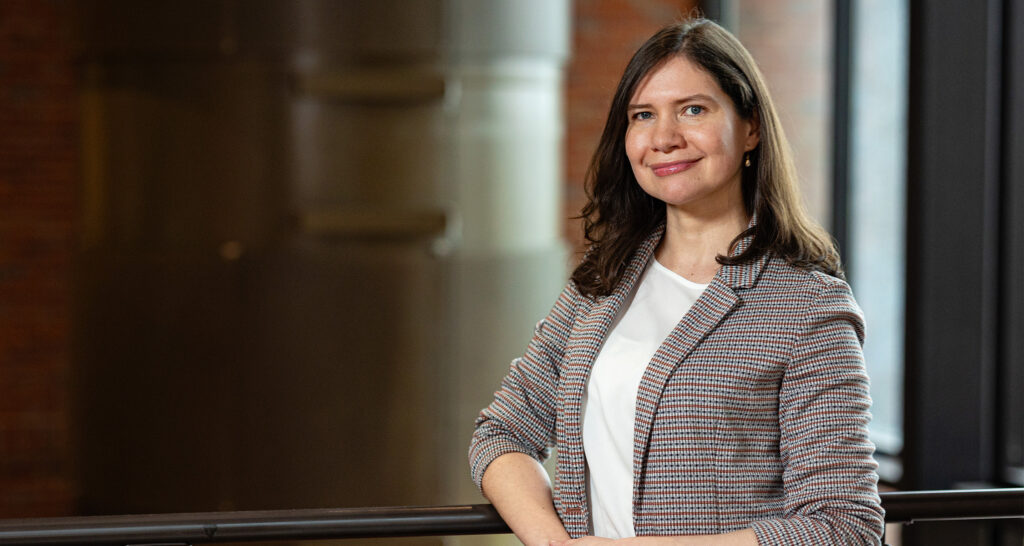Few could have predicted how quickly facemasks and hand sanitizer would go flying off the shelves when the Covid-19 pandemic gripped the world in 2020. The items had not been a regular part of society’s daily life, and supply chains were not prepared to respond to the need in such a short amount of time.
Certain consumers began buying the items in bulk, depriving others from having the opportunity to purchase them. It’s a common occurrence in the aftermath of large disasters or catastrophes, because people fear they won’t have enough to last throughout the duration.
But the hoarding tendency can exacerbate challenges already faced during disasters, making it harder for relief efforts to effectively respond to the needs of affected communities.
What are potential short-term solutions to mitigate the impact?
Oriana Calderon, an assistant professor in the Department of Civil and Environmental Engineering, explored the issue in a recently published study that was co-authored by Jose Holguin-Veras, a professor at Rensselaer Polytechnic Institute, and Haiyan Liao, a doctoral candidate at Southwest Jiaotong University.
Calderon and her colleagues conducted a survey examining the purchase, hoarding, and donation behaviors related to facemasks in China during the peak of the Covid-19 crisis. They oversaw a thorough analysis of the data and used econometric models to understand the socioeconomic factors that foster, or deter, the donation of critical supplies to others.
The goal of the research was to find out what freight demand management initiatives could help in shortages of critical items.
“We need to think about the society as a whole. We cannot be selfish. Understanding that others have certain needs and that they don’t have access to things because of different situations is crucial,” Calderon said. “But knowing that we can do something in order to address this issue, I think that should be a good motivation for people.”
Donations of Excess
During an instance of sudden demand when supply chains cannot be scaled up to deal with catastrophes, there are three different freight demand management initiatives that can be used to induce customers to change their behavior:
- Rationing at the point of sales
- Inducing consumers to reduce their purchases
- Appealing to the purchasers of critical supplies to donate part of the items they purchased
Calderon’s research focused on appealing to purchasers to donate part of the items they purchased in excess.
“Why this is important? Because even though we have these supply chain issues, there is there is still hope for the society to get access to critical supplies during disasters if we have this type of initiative,” Calderon said. “When we say donations, we focus only on donation of excess of supplies. So basically, you are donating things that you do not need.”
Although many have termed these hoarding actions as “panic buying,” Calderon and her fellow researchers concluded it should be termed “disaster-related buying behaviors (DRBBs).”
“This is not actually a result of panic. This is not irrational behavior. It’s not like you buy without any reason,” Calderon said. “There are reasons and motivations for this specific buying behavior. People have some rational intentions, because they want to protect their families, protect themselves. They want to help friends or families.”
Changing Behaviors
During the Covid-19 pandemic, safety was of paramount concern. Shortages of personal protective equipment especially for emergency responders and healthcare workers on the frontline, was a critical issue.
Calderon’s study found that one-third of people were unable to buy facemasks during the pandemic because of shortages. The results indicated that 13.7% of participants were willing to donate surplus facemasks, which suggests that public appeals for donations could serve as a corrective tool to address DRBB-induced shortages.
“This is key, because we have a large proportion of the sample that are willing to donate. Through a demand management initiative, we could reach out to these people and have them donate,” Calderon said. “But we could also reach out to the people that are not willing to donate to find out why, and to try to induce changes in these people.”
The average number of facemasks purchased was 65, which is more than a two-month supply of disposable facemasks. Interestingly, the people who obtained the greatest number of facemasks were the least willing to donate.
“This was a very consistent pattern,” Calderon said. “There is something that could be done in that specific area to help possibly change that behavior now that we are aware of it.”
Although the study focused on one type of disaster, the results can be applied to any similar catastrophes in which the supply chain in disrupted and a specific item becomes scarce.
“Now that we’ve found these key insights, we can formulate a donation or return-to-store program and figure out what the steps are that any governmental agency should follow to have this program in place when we have these types of situations,” Calderon said. “Once we identify if items are a good fit for donation and the people most and least willing to donate, we can formulate logistical processes to make these donations possible.”
Contact
Rhiannon Potkey (rpotkey@utk.edu)
